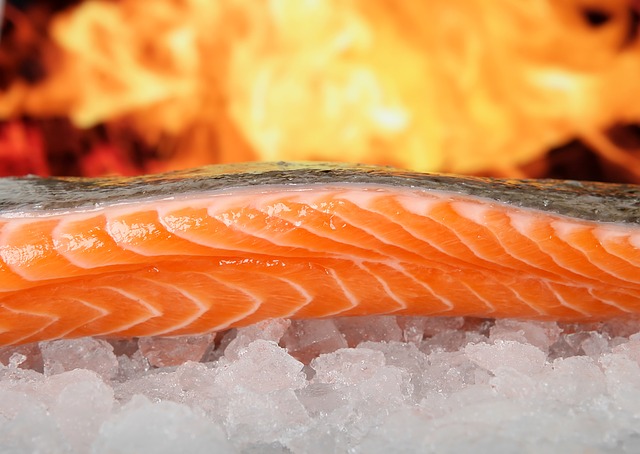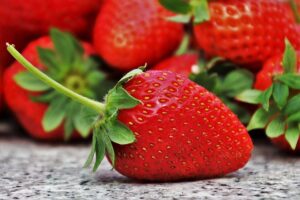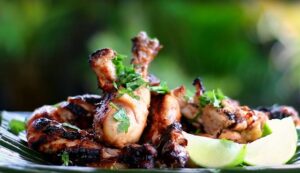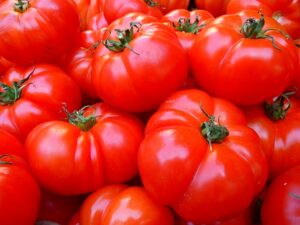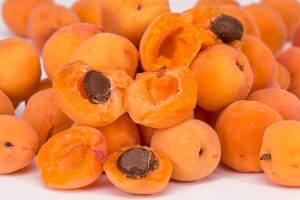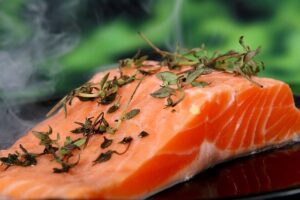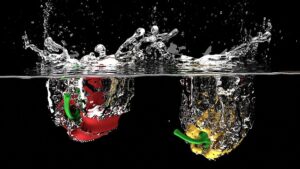Category: Food
1. Unit 8 Flashcards | Quizlet
Study the teeth in Figure 27-7 what kind of diet are these teeth adapted for? Ripping and tearing meat.(1)…
Study the teeth in Figure 27–7. What kind of diet are these teeth adapted for? (3 points) 31. In what ways are lungs and gills similar? (3 points) (2)…
OpenStudy (bizzeizzy):. (image attached) Study the teeth in Figure 27-7. What kind of diet are these teeth adapted for? 6 years ago. Still Need Help?2 answers · 0 votes: attachment(3)…
2. Study the teeth in figure 27-7. what kind of diet are these teeth …
Jan 14, 2020 · 2 answersAnswer: 2 ✓ on a question ➜ Study the teeth in figure 27-7. what kind of diet are these teeth adapted for?(4)…
What is the difference between mechanical and chemical digestion? Figure 27–7. 64. Study the teeth in Figure 27–7. What kind of diet are these teeth adapted 33 pages(5)…
SPECIALIZED TEETH. Figure 27–3 Mouthparts The specialized jaws and teeth of animals are well adapted to their diets. TEKS 10A. Animal Systems I 785 26 pages(6)…
3. Diet and the evolution of the earliest human ancestors | PNAS
by MF Teaford · 2000 · Cited by 461 — These teeth were well suited for breaking down hard, brittle foods, including some fruits and nuts, and soft, weak foods, such as flowers and (7)…
by TE Cerling · 2011 · Cited by 249 — Its diet included more C4 biomass than any other hominin studied to for these samples was -1.3 ± 0.9‰ (24 teeth from 22 individuals), (8)…
4. Evolutionary Adaptations to Dietary Changes – NCBI
by F Luca · 2010 · Cited by 189 — Stable isotope ratios (e.g., 18O/16O) from fossil teeth and bone represent a and adapted to use the dietary components available in those environments.(9)…
Examine Figure 1.1, which displays the locations of each of these types of teeth how these teeth might look in animals of a particular diet type.55 pages(10)…
by PS Ungar · 2012 · Cited by 67 — and chemical compositions of the teeth and jaws (see Ungar This figure is modified Studies of molar allometry face the same limitations as those.(11)…
by B Van Valkenburgh · 1989 · Cited by 326 — These very different dental forms have evolved from less specialized forms over the course of the The origin of the specialized teeth of the Carnivora.(12)…
The premolars and molars are at the back of the mouth. Depending on the particular mammal and its diet, these two kinds of teeth prepare pieces of food to be (13)…
5. Tracing intensive fish and meat consumption using Zn isotope …
by K Jaouen · 2018 · Cited by 17 — isotope ratios of their teeth compare to those of other French historical populations previously studied, which were characterized by cereal-based diets, (14)…
Lab #2: Bones and structures of the mammalian skull, Teeth, Types of traps used in Part of these differences correspond to differences in diet.(15)…
by M Clauss · 2007 · Cited by 77 — giraffe are usually fed a diet of alfalfa hay and pel- raffe feeding.7 to be able to investigate tooth forms from different.14 pages(16)…
6. Studying mammals: Plant predators: 3 Herbivore teeth – The …
You might be able to see this movement for yourself if you have the opportunity to watch some of these herbivores eating. Activity 2. In LoM information is (17)…
by PJ Hundt · 2018 · Cited by 14 — In these fishes, teeth may be present on the oral jaws incorporated into diet studies until recently (reviewed in Wilson et al. 2003). Detritus is an.(18)…
by MA Berthaume · 2020 · Cited by 6 — Teeth are also adapted to diet in animals—particularly ones that chew weak (Figure 7), meaning that, although these metrics are similar, (19)…
by J Bestwick · Cited by 3 — Sampling teeth that are minimally affected by non-dietary and sampled teeth from these regions are termed out-levers (OL) 1–5, respectively (figure 1).(20)…
7. Dental features in theropods – Palaeontologia Electronica
But in most studies, teeth are diagnosed on qualitative characters. of the premaxilla possibly as the result of adaptation to a diet involving increased (21)…
by Á García de los Ríos y Loshuertos · 2021 — In the oral cavity, teeth remain inside the alveolus and covered by gums. Our study analyzes these cavities using high-resolution endoscopy to observe (22)…
by G Calhoun · 2019 · Cited by 1 — many primate species are adapted for specialized diet and ingestive behavior. s study to include comparisons of the anterior dentition, as these teeth (23)…
8. Diagnosis and Management of Dental Erosion – Dentist in …
by MC Marchbank — Table 1 lists the definitions of each of these forms of tooth surface loss or tooth Figure 7 – Diagnosis-and-Management-of-Dental-Erosion-illustration-8.(24)…
Theropod dinosaurs are well known for having a ziphodont dentition: serrated, blade-shaped teeth that they used for cutting through prey. Serrations along the (25)…
by JD PAMPUSH · 2018 · Cited by 11 — Nevertheless, several studies of macrowear on primate teeth have attempted to link wear-based changes in occlusal morphology to dietary characteristics (Janis, (26)…
9. Case Reports Evaluating Survival and Bone Maintenance
A 69-year-old male presented with loose crowns on teeth Nos. 7 to 9 (Figure 3). The restorative dentist determined these teeth could not be restored due to (27)…
by E Pasco-Viel · 2010 · Cited by 52 — Previous studies of pharyngeal teeth have been carried out by Figures 6 and 7 show the ML analysis of these characters on a tree that we (28)…
10. From Land to Water: the Origin of Whales, Dolphins, and …
by JGM Thewissen · 2009 · Cited by 151 — We focus on the evolution of cetacean organ systems, as these A stable isotope study of the teeth of Indohyus also suggested that it (29)…
by R Joannes-Boyau · 2019 · Cited by 27 — This study provides insights into the dietary cycles and ecological behaviours The geochemical findings for these teeth reinforce the unique place of A.(30)…
Jun 10, 2021 — The dentition of the Tasmanian devil is also adapted to a hypercarnivorous diet (11, 12). The Tasmanian devil has a total of 42 teeth, (31)…
by AF Clement · 2012 · Cited by 75 — In this study, the resulting figure for each tooth in each individual is known as the wear ratio. Those teeth with a similar wear state to the first molar (32)…
teeth has therefore naturally been associated with various dietary Figure 2.14 2D sketches and dimensions of hard objects used in this study .(33)…
1 Incisor eruption timing for horses (Tremaine 2012) and donkeys (Muylle et al. 1999). Figure 10.3.1 Erupting incisors. It is important not to confuse these Missing: adapted | Must include: adapted(34)…
Birds have developed a digestive system adapted to eating unmasticated food. They do not have teeth and so their digestive system, shown in Figure 3, Missing: 27 7(35)…
animals may be sea squirts, as shown in Figure 1, which is one teeth, claws on its front limbs, and feathers was found. The modified forms of these.(36)…
radiographs (Figures 3 to 6). Binding of epidermal growth factor was evident in all tissue explants studied, thus indicating that the teeth of.(37)…
1861This much – admired collection is the best adapted of all extant for the u e of TEETH , whereby injurious ligatures are avoided , and perfect ARALYSIS (38)…
Excerpt Links
(1). Unit 8 Flashcards | Quizlet
(2). Solved 30. Study the teeth in Figure 27–7. What kind of diet
(3). (image attached) S… – QuestionCove
(4). Study the teeth in figure 27-7. what kind of diet are these teeth …
(5). Animals #2 Pracitce Test
(6). 27 Animal Systems I – Savvas Learning Company
(7). Diet and the evolution of the earliest human ancestors | PNAS
(8). Diet of Paranthropus boisei in the early Pleistocene of East …
(9). Evolutionary Adaptations to Dietary Changes – NCBI
(10). Unit 2: Of Skulls & Teeth – Biology In A Box
(11). Dental Evidence for the Reconstruction of Diet in African Early …
(12). Carnivore Dental Adaptations and Diet: A Study of Trophic …
(13). Dentition – Wikipedia
(14). Tracing intensive fish and meat consumption using Zn isotope …
(15). Lab
(16). TOOTH WEAR IN CAPTIVE GIRAFFES (GIRAFFA … – BioOne
(17). Studying mammals: Plant predators: 3 Herbivore teeth – The …
(18). Extreme dentition does not prevent diet and tooth …
(19). Over 20 years of dental topography in primates – Wiley Online …
(20). Dental microwear texture analysis along reptile tooth rows
(21). Dental features in theropods – Palaeontologia Electronica
(22). Endoscopic Study of the Oral and Pharyngeal Cavities … – MDPI
(23). Dental macrowear, diet and anterior tooth use in Piliocolobus …
(24). Diagnosis and Management of Dental Erosion – Dentist in …
(25). Microanatomy of ziphodont archosaur teeth with deep …
(26). Adaptive wear-based changes in dental topography …
(27). Case Reports Evaluating Survival and Bone Maintenance
(28). Evolutionary Trends of the Pharyngeal Dentition in … – PLOS
(29). From Land to Water: the Origin of Whales, Dolphins, and …
(30). Elemental signatures of Australopithecus africanus teeth …
(31). The Macroscopic and Radiographic Skull and Dental …
(32). Tooth wear, Neanderthal facial morphology and the anterior …
(33). Dental morphology and mechanical efficiency during … – CORE
(34). The teeth – Ageing and a practical approach to dentistry
(35). Invertebrates and Vertebrate Digestive Systems – Lumen …
(36). Fish, Amphibians, and Reptiles
(37). JOURNAL OF DENTISTRY FOR CHILDREN – AAPD
(38). The Illustrated London News

